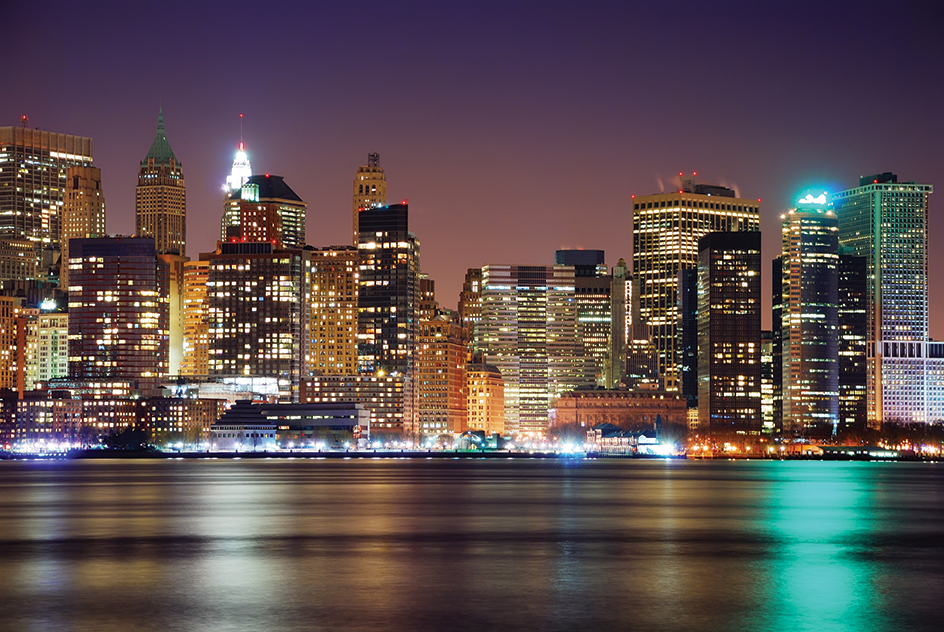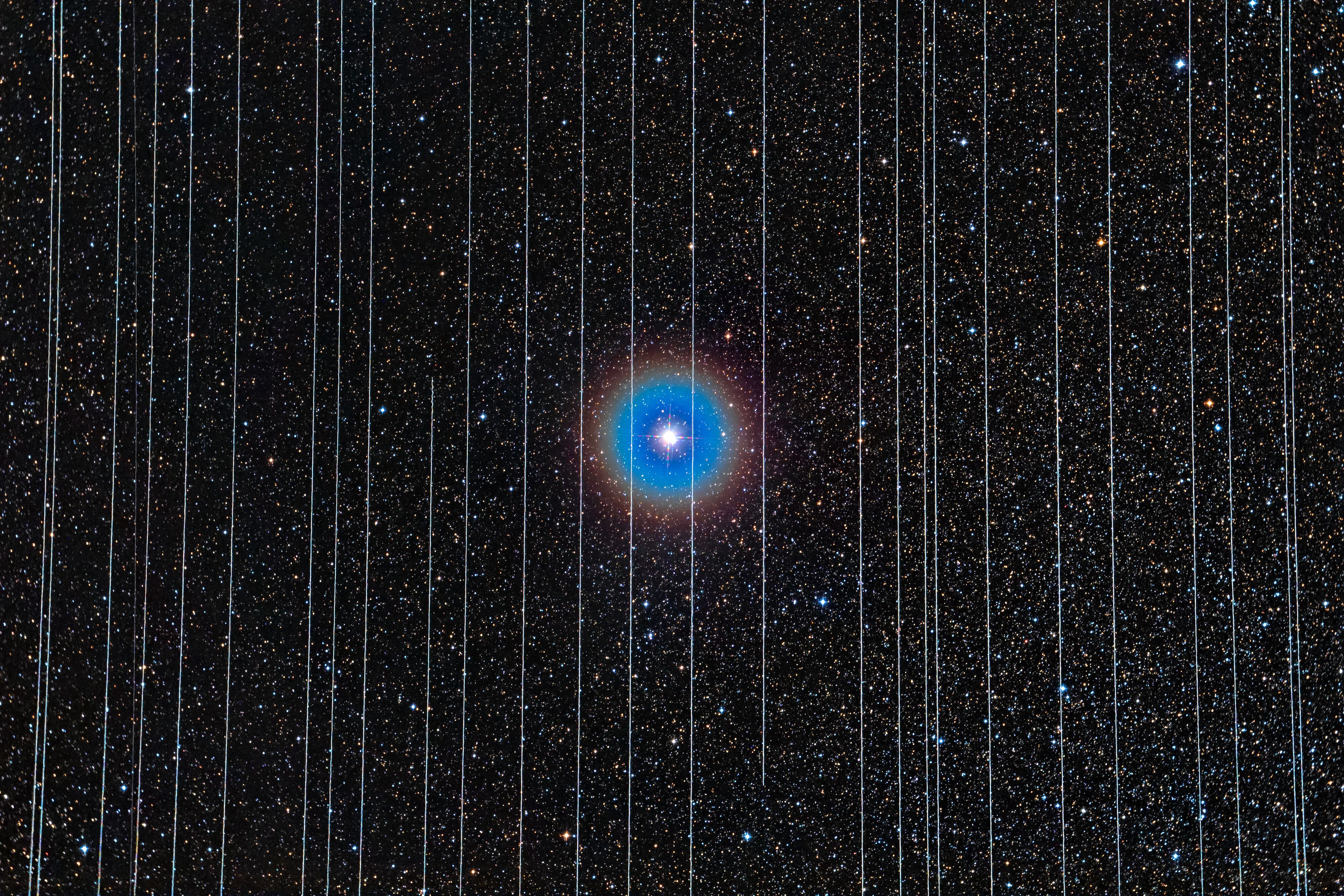Light pollution is an excess of light that produces harmful or disruptive effects. Most light pollution comes from outdoor artificial lighting, such as street lights. Artificial satellites that reflect natural light can also contribute to light pollution. Because of light pollution, people in or near cities cannot see many stars, even on a clear night. Light pollution harms both wildlife and people. It is one of the fastest-growing forms of environmental pollution.

Many street and building lights in towns and cities are not aimed only at the ground. Instead, their light goes in many directions, including up into the sky. Such lights, combined over a wide area, create a type of light pollution called sky glow. This glow is often brighter than starlight. It hides stars’ light in much the same way that the sunlit sky does during the day.
Some lights are positioned so that they shine on areas that people wish to remain dark. Such light pollution, called light trespass, may annoy people and interfere with the work of observatories. In addition, light fixtures waste energy by shining light where it is not needed.
Light pollution harms people in many ways. Brightness at night makes it harder for people to get enough sleep. It may make people more likely to become depressed or develop diseases. Light pollution also makes it difficult for astronomers to make scientific observations of the night sky. In some areas, the ability to view stars and other heavenly features is culturally important. For example, to some Aboriginal peoples in Australia, certain features represent specific plants, animals, and natural cycles. For thousands of years, these representations have helped the people remember, and pass on, knowledge of the natural world.
Light also affects the behavior of many animals, including migrating birds, frogs, and sea turtles. Artificial light sources may attract such animals, thus disrupting their natural movements. In some cases, excessive light can disrupt an animal’s internal body rhythms.
Many communities attempt to limit light pollution. Light sources on the ground can be shielded to make them shine only in a certain area, and not up into the sky. Such lights produce little glare and are typically aimed downward. But light reflected from the ground or from building walls can also contribute to sky glow, so people must limit the wattage of street lighting. Communities also fight light pollution by regulating the type and position of lighting fixtures. Some countries have designated dark sky preserves, areas where light pollution is especially tightly restricted.
Growing sources of light pollution include artificial satellites orbiting Earth. Active satellites increase in number each year. They add to sky glow and interfere with astronomy. In addition, light-emitting diodes (LED’s) are the primary source of artificial light in many countries. LED’s use less energy than incandescent light bulbs, but they are also brighter and thus can emit a greater amount of unwanted light. 
